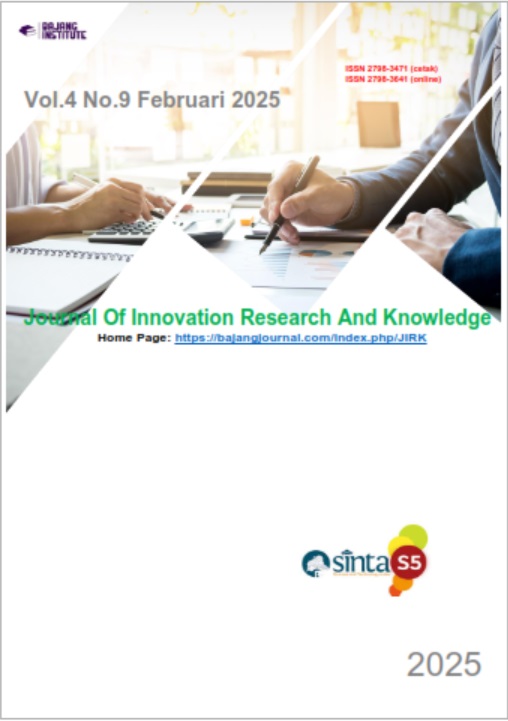TIPOGRAFI DIGITAL: OLAH KEUNIKAN KARAKTER VISUAL BERNUANSA LOKAL KE DALAM KESATUAN STRUKTURAL
DOI:
https://doi.org/10.53625/jirk.v4i9.9656Keywords:
Type Design, Latin Typography Principles, Local Forms, Experiment, Structural UnityAbstract
Typography is now a territory accessible not only to designers but also to laypersons since personal computer became prominent. Nowadays, one without any formal typographic knowledge might utilize page, image and type editing softwares, including thousands of fonts from free to paid ones. Nevertheless, typography and type design could not simply be equated with availability and common usage of their tools. As experties in fashion design or architecture are never automatically mastered only by daily wearing of clothes or dwelling in homes. Knowledge and expertise on Latin typography is preserved in a long tradition since the Ancient Rome period somewhat 2500 years ago. It is from which the form and proportion of typefaces currently known as serif – such as Times New Roman which is used in this journal – originates, and continue to evolve along with changes of era.
Hence, even computer which inheres an algorithmic nature have became today’s tools of the trade, knowledge and practice of type design are by no means algorithmic (quantifiable) but cultural (qualitative) in character. These explain why there are qualitative differences of design within Latin typography itself from time to time, besides undisputable existence of non-Latin typography such as Chinese or Arabic, each with its own criteria. It is impossible to specify such a diverse cultural insight of design from an assumption of uniformity of mechanical laws of nature which could be quantified and predicted in a totally objective manner.
Therefore the nature of this research is strictly qualitative and practice-based where the first step is to explicate few basic principles embodied in historical practices of Latin typography through literary studies. Those principles are brought to typography classes of DKV New Media Binus University as a point of departure for students in an experimental development of new typefaces which synthesize character’s consistency of Latin alphabet with non-alphabetic shapes or local forms. Expected outcomes of this experimentation are novel and unexpected typefaces which also show coherent structural qualities, as a contribution to the world of type design in general and as creative portfolios of DKV New Media Binus University in particular.
References
Carter, R., Day, B., Maxa, S., Sanders, M., & Meggs, P. 2017. Typographic Design: Form and Communication, New Jersey: John Wiley & Sons Inc.
Sihombing, D. 2015. Tipografi Dalam Desain Grafis, Jakarta: Buana Printing.
Lupton, E. 2010. Thinking with Type, 2nd revised and expanded edition: A Critical Guide for Designers, Writers, Editors, & Students, New York: Princeton Architectural Press.
Jill Yelland, J. 2003. Type Survival Kit for All Type Emergencies, Perth: Press for Success.
Middendorp, J., Spiekermann, E. 2006. Made With FontFont, Amsterdam: BIS Publishers.
Meindertsma, J. 2016. The Power of Typefaces: Dyslexie. TXT (Academic Press Leiden, Elsevier), 1, 56-59.
Saryanto, U., 2021. Kajian Karakterisasi Jenis Huruf Avenir Dan Kaitannya Dengan Tingkat Keterbacaan. Dimensi Seni Rupa dan Desain, 18 (1), 75-92.
Carina, R., 2019. Penggunaan Huruf Dekoratif Dalam Tipografi Kinetis. 1 (4). Dimensi Seni Rupa dan Desain, 17-32.
Akbar, T., Raden, A.Z., 2016. Tipografi Vernakular Pada Warung Tenda Kaki Lima Di Jakarta, Dimensi Seni Rupa dan Desain, 2 (1), 175-183
A. Rahardja, A., Adiwijaya, D.R. 2014. Seni Bicara Lewat Typeface Dekoratif dan Komposisi. Humaniora, 5 (2), 710-718.













